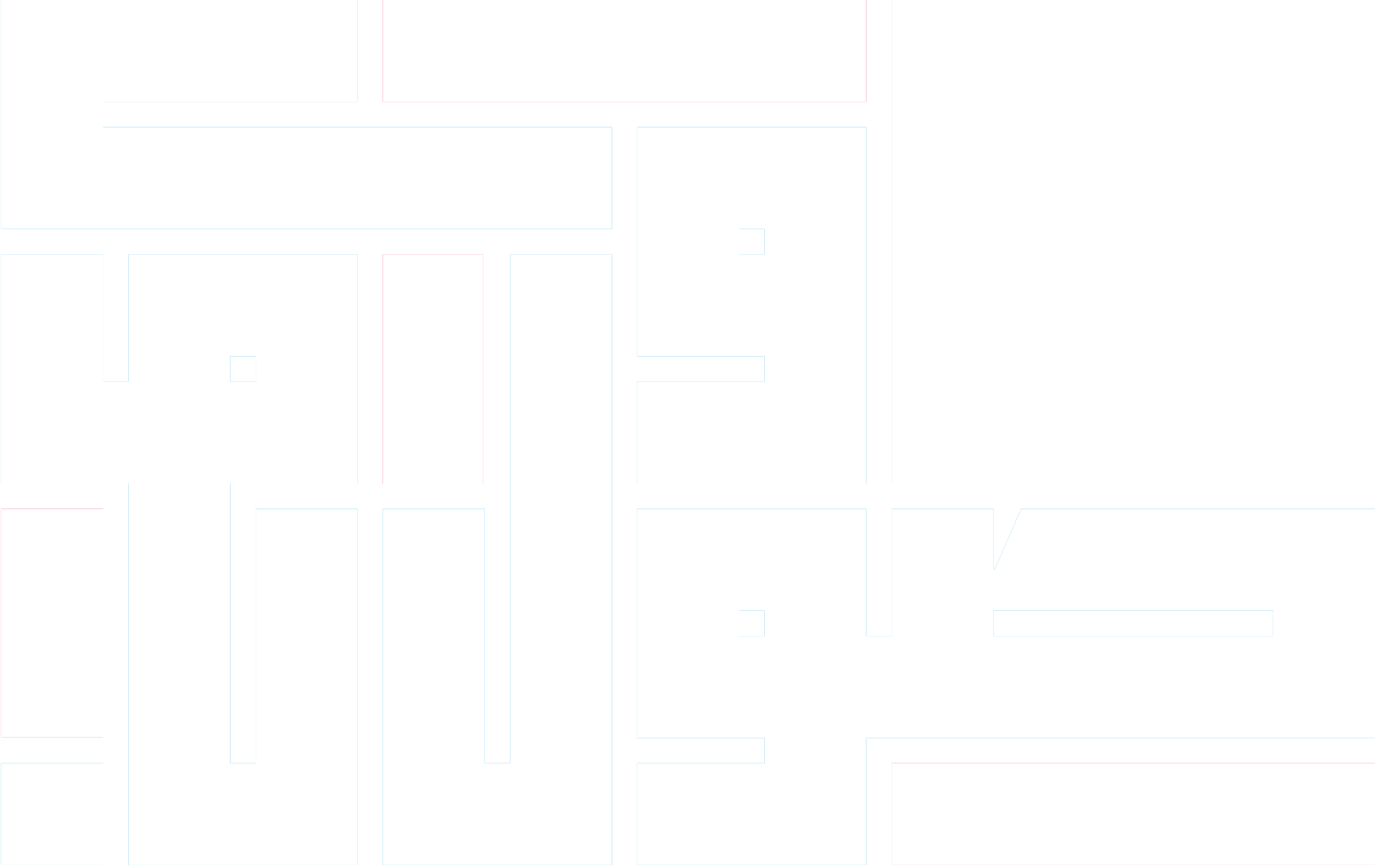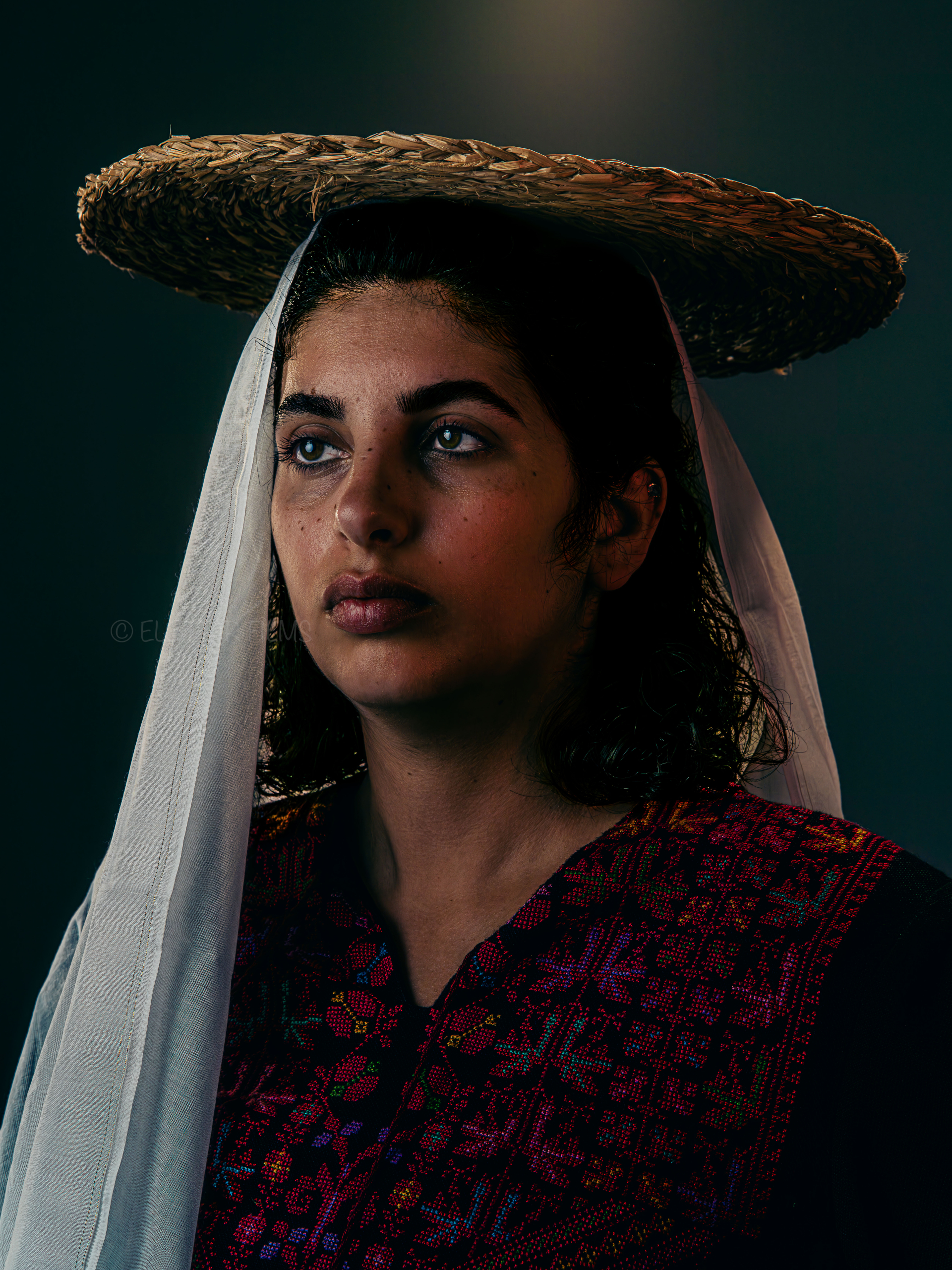
Nature
Face of Solidarity

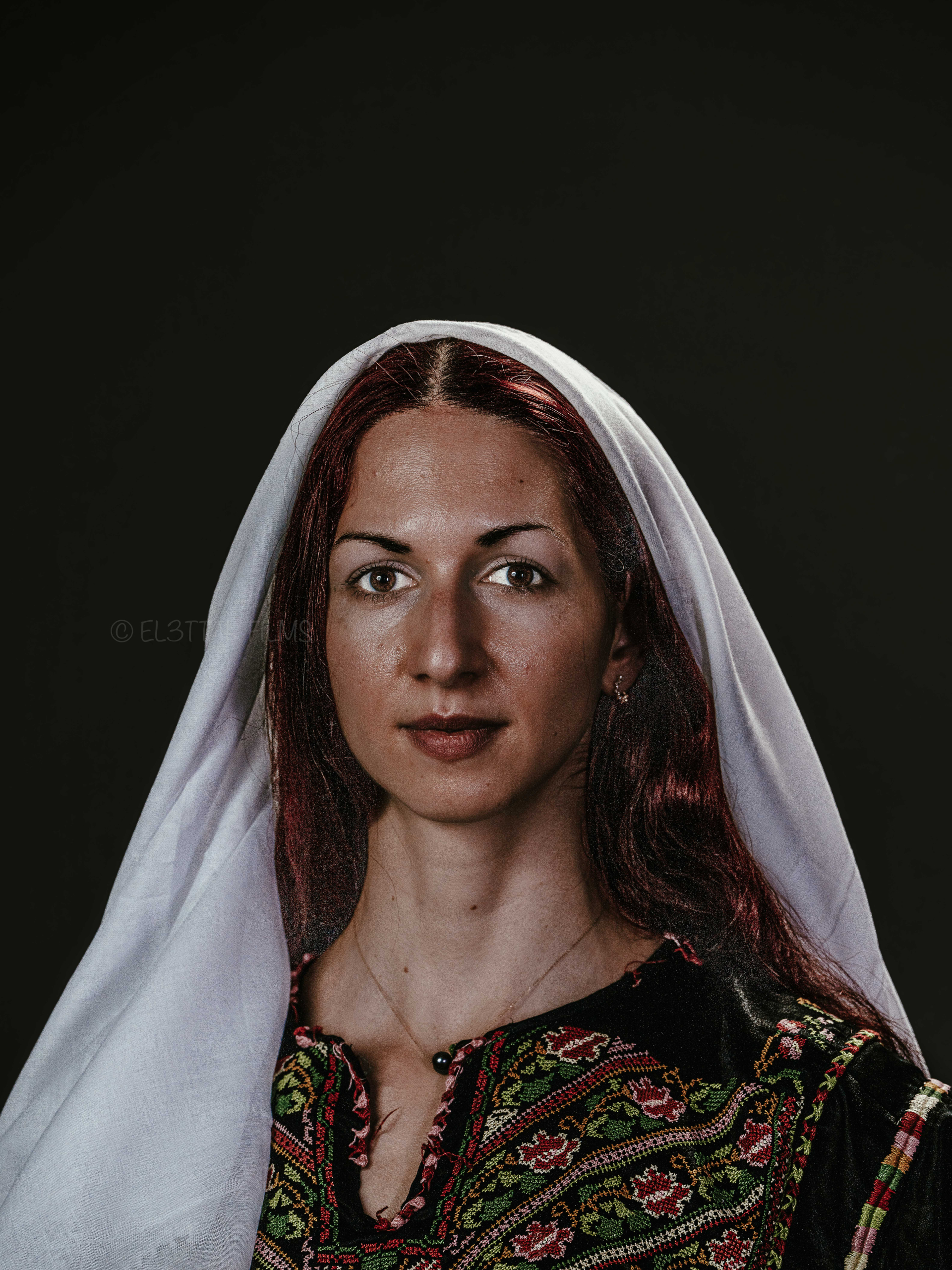
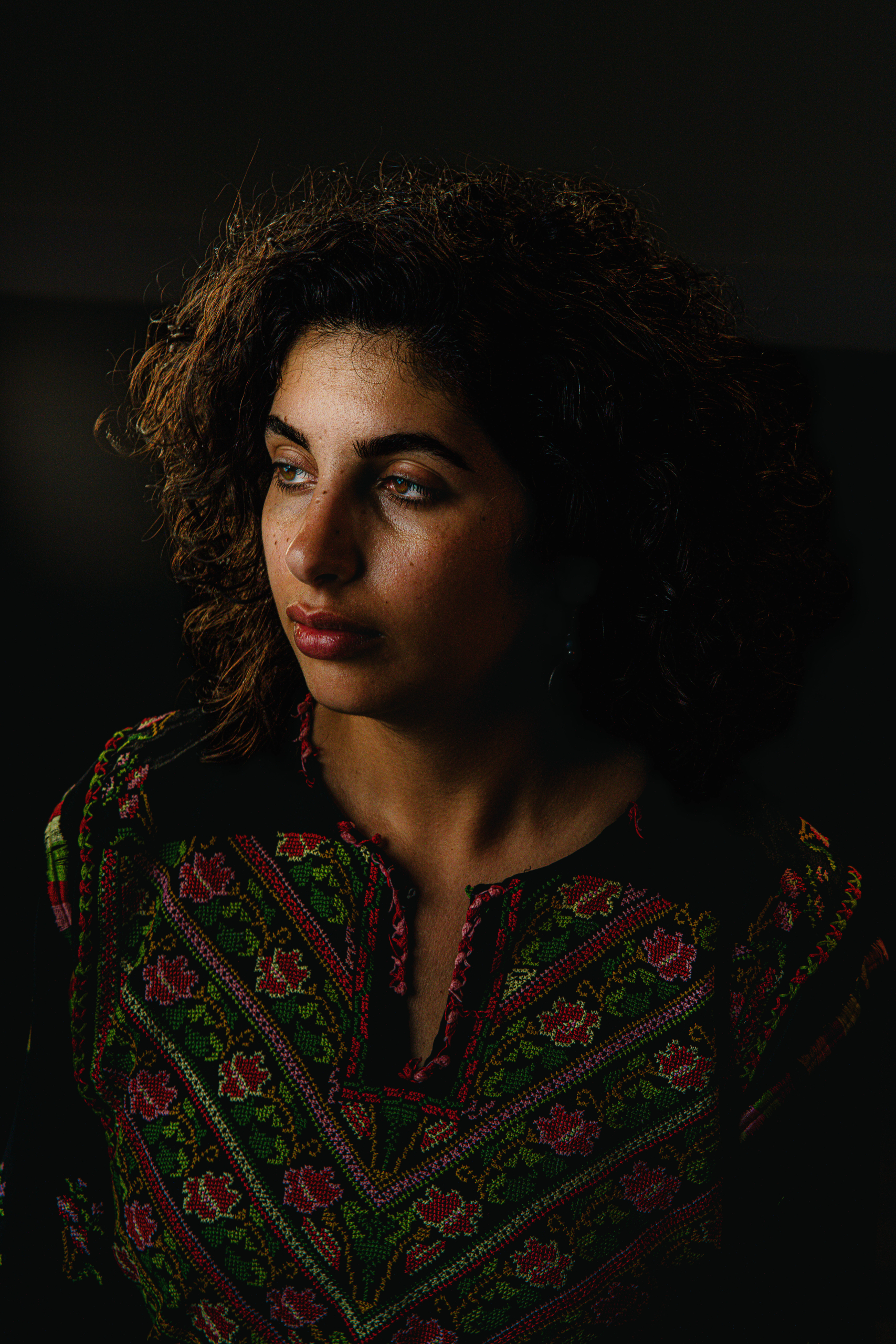
State of Art
The zionist project is based on the destruction of Palestinian existence, replacing the Palestinian nation with settled colonizers, cultural appropriation of the Indigenous Palestinians, and denying the Palestinians’ existence throughout history.
The elders will die and the youngsters will forget» David Ben Gurion
After the Nakba, The zionists aimed to isolate the Palestinians from their roots, politically, economically, culturally, and socially. The zionists started to claim that they are Indigenous to Palestine and stated that they are originally Palestinians eg.: Golda Maier claimed that she is Palestinian despite the fact she was born in Kiev.
The Concept
In response to the genocide of Palestinians that aim to eradicate them, their identity, culture, heritage, and their very existence. This artistic project aims to replicate old Palestinian portraits of Palestinians in traditional folklore clothes. The models for this project are diverse faces and stories of individuals involved in Palestinian solidarity movements in Brussels.
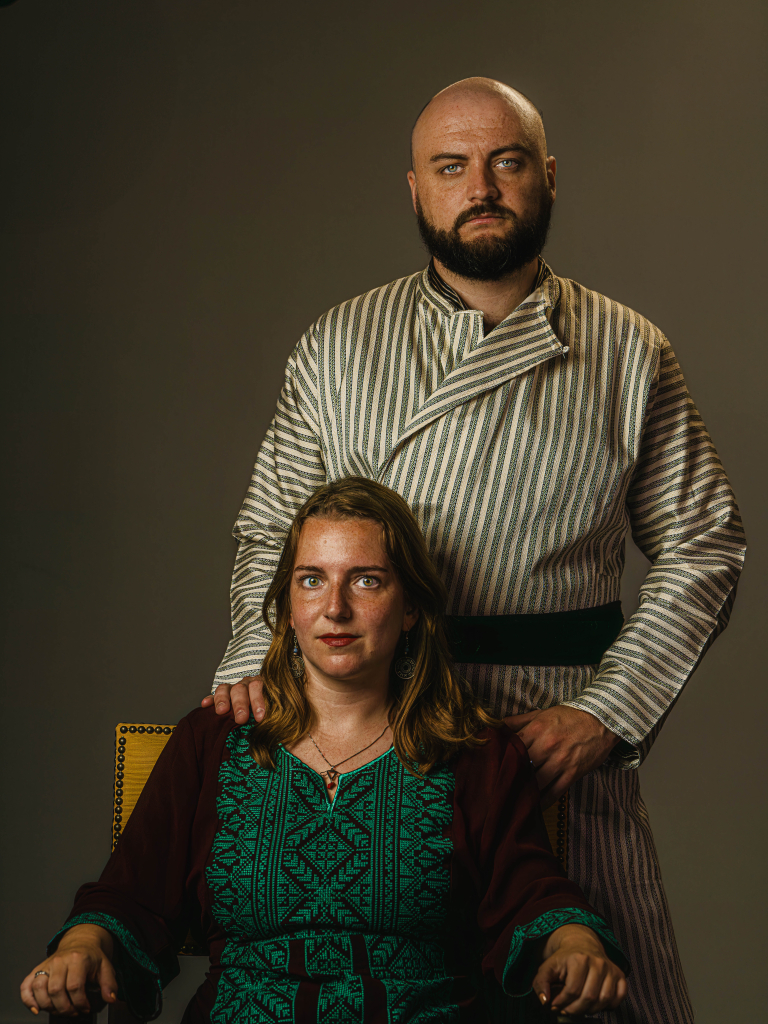
History Background
The introduction of photography in Palestine dates back to the late 19th century, significantly influenced by the Armenians who played a pivotal role in developing this art form in the region. Known for their craftsmanship in visual arts, the Armenians brought photography as a modern means to document daily life, events, and landmarks.
The story begins with Armenian photographers who settled in Jerusalem in the late 1800s, such as the Krikorian family, which established the city’s first photography studio. Over time, photography became a part of the visual culture in Palestine, used to capture various aspects of social, cultural, and political life.
As time progressed, photography in Palestine evolved beyond a mere documentary tool. Palestinian photographers started to use it as a medium for artistic expression and to strengthen cultural and national identity. During the Nakba and the ensuing years, photography became a crucial means of documenting the Palestinian tragedy and resistance, adding profound political and human dimensions to the art.
Alongside the Armenians, subsequent Palestinian generations contributed to the development of photography, reflecting their experiences and perspectives, thus solidifying photography as an integral part of modern Palestinian culture.
THE FACES
- Name: Simona
- Role in Solidarity Movement: the front line enthusiast.
- Connection to Palestine: Solidarity.
Visual Composition:
- Pose & Expression: A typical woman pose from the 19th cent. in Palestine.
- Lighting & Style: flat face light that was famous in central Palestine for religious reasons.
Symbolism:
- Elements: A Southern Hebron farmers day-to-day dress for women. The chest piece of the dress has immigrated from anther dress. The flours on the sleeve and the sides are original to this dress.
- The chest piece is featuring the most important fruit of the area in Hebron: Grabs.
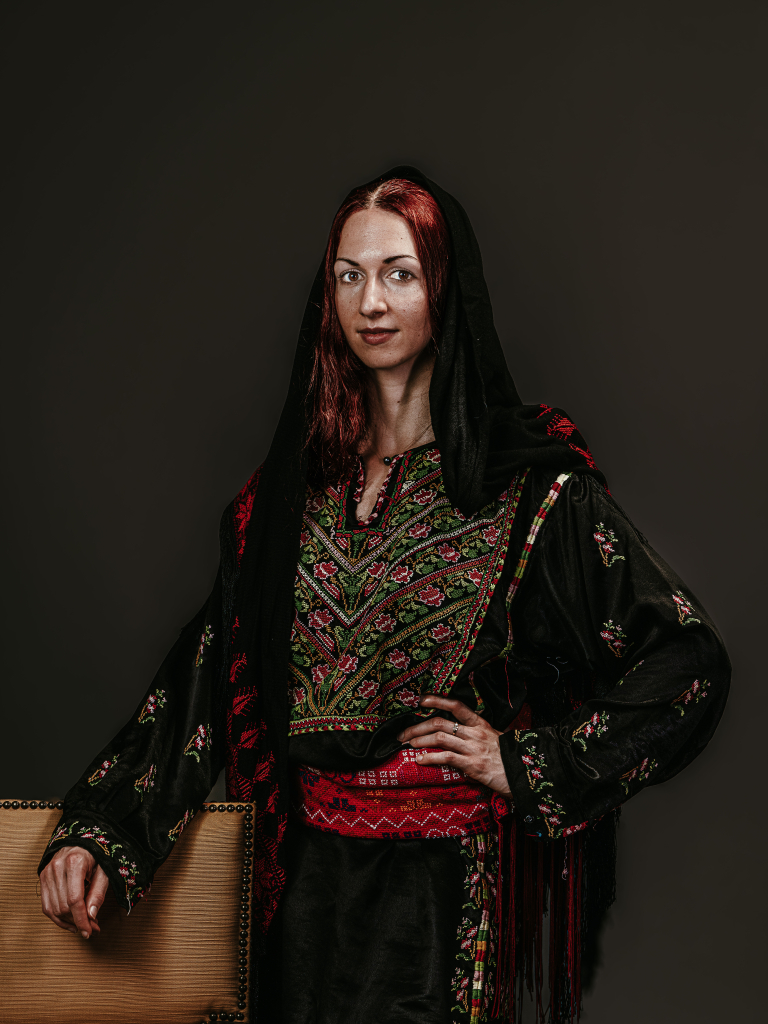
Majdi
- Name: Majdi
- Role in Solidarity Movement: community organiser.
- Connection to Palestine: A Palestinian.
Visual Composition:
- Pose & Expression: Classic fisherman from Gaza portrait and a replica of his grandfather portrait that was lost under the rubble when Israel bombed their house near Al-Shifa Hospital.
- Lighting & Style:Classic lighting of Mandi’s face with warm counter lights and reflections in warm. The key light in neutral tone and fill is warm.
Symbolism:
- Elements: Majdi re-constructed his grandfather look based on his memory and help of access to classic folklore clothes from gaza in several people wardrobe.
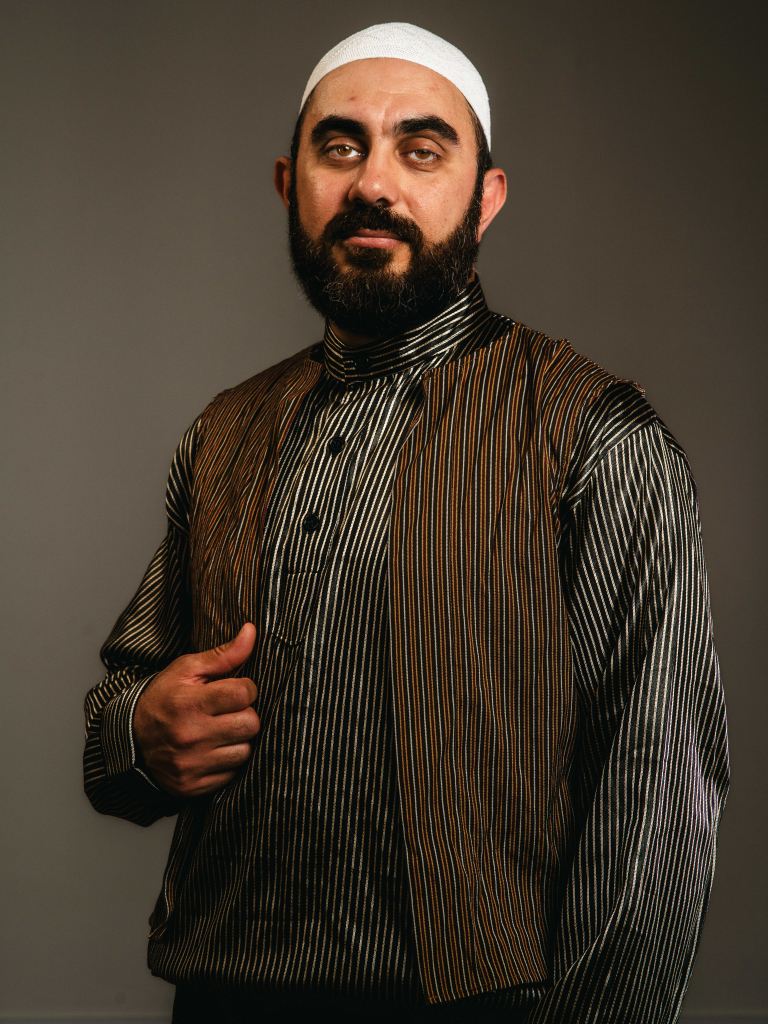
Saher
- Name: Shaher
- Role in Solidarity Movement: Community and manifestation organiser.
- Connection to Palestine: A Palestinian.
Visual Composition:
- Pose & Expression: usually with a dagger, this is a classic pose of North Palestine bedouins.
- Lighting & Style: sSoft side key light and harsh counter light to create contrast..
Symbolism:
- Elements: a Typical bedouin head cover with no knots, Abbaya to cover a white long dress with a back belt..
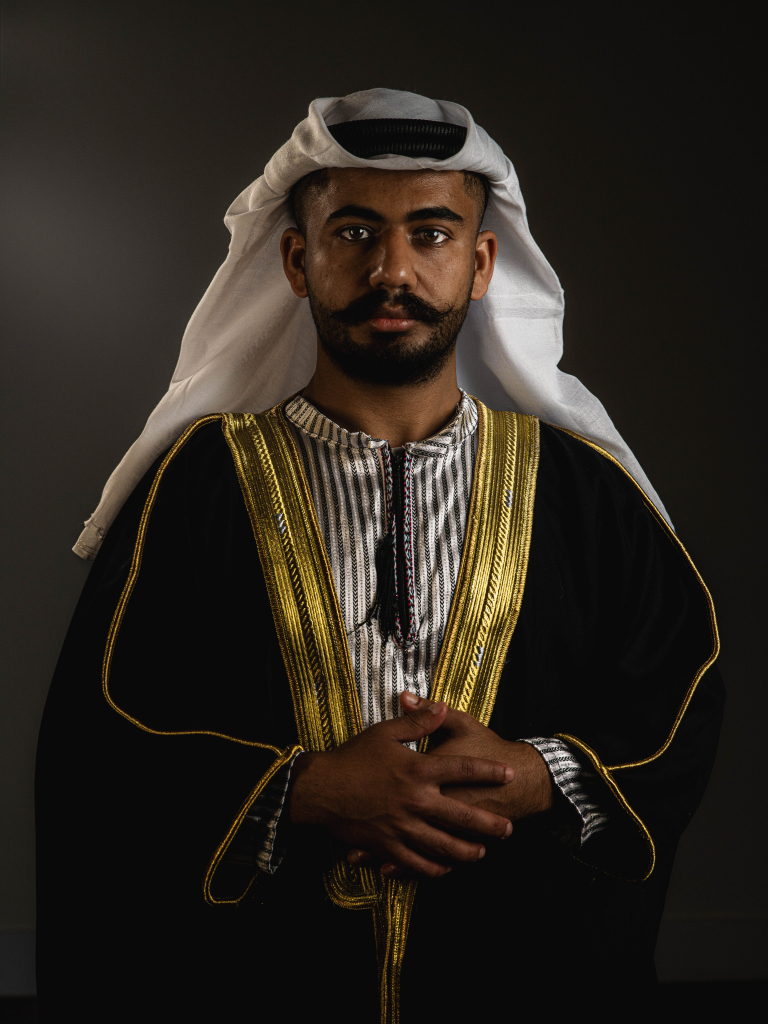
Name: Shaker
Role in Solidarity Movement: A Palestinian.
Connection to Palestine: Shaker was raised up in Rafah before he left to Europe looking for a better future.
Visual Composition:
- Pose & Expression: A classic pose of eldry men from Central Palestine.
- Lighting & Style: 4 points of light. Big soft light to cover the front of the face, a back light to separate from the background, & a top light to reduce the contrast.
Symbolism:
Elements: The headband is Islamic scolar of Alazhar, Egypt. This used to be the main education for religious studies in Palestine. This is a typical Friday’s look. Shaker here re-constract his grandfather look back in Basheet before 1948.
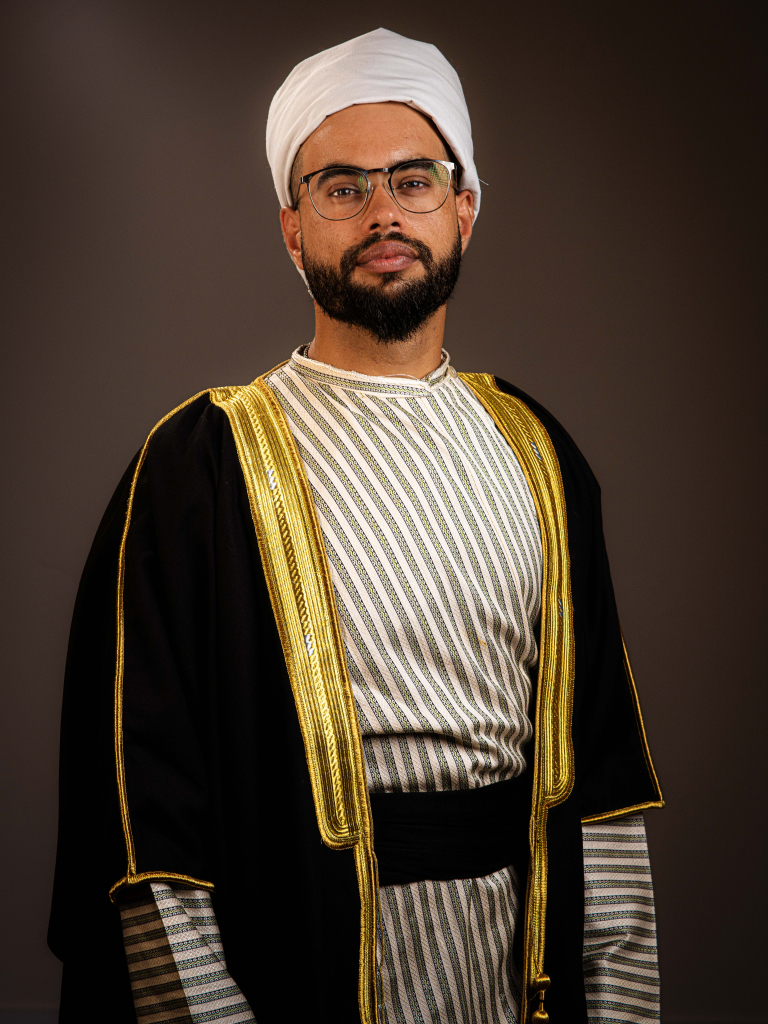
- Name: Myrthe
- Role in Solidarity Movement: Solidarity.
- Connection to Palestine: Visited Palestine and work on weekly bases for Palestine as a volunteer.
Visual Composition:
- Pose & Expression: A classical pose of women in the 19th Century in central Palestine.
- Lighting & Style: 4 points of light. The soft key light from her right. Classic Rembrandt technique is used that was famous in Palestine in the 19th century. A hair light to separate her and the background and gave her a little warm hallo on the side.
Symbolism:
- Elements: The headband is a classical tie from the Southern of Palestine. The dress is a day-to-day dress with plain geometric shapes that was developed later in the start of the 20 century central Palestine.
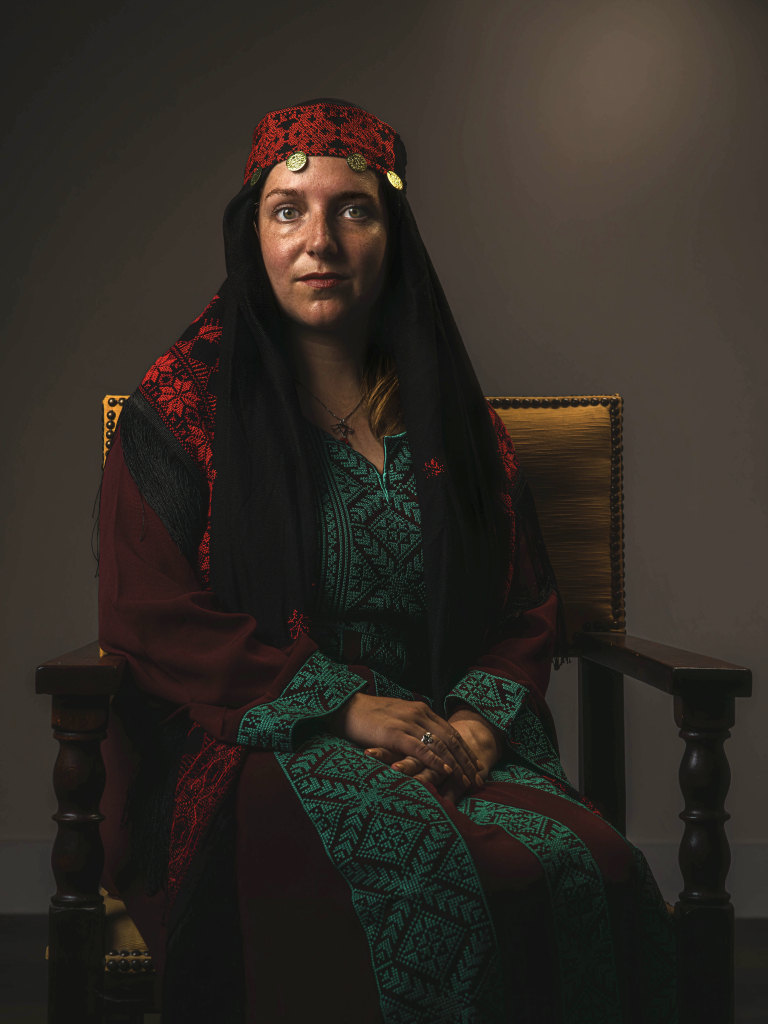
Name: Marta and Berta
Role in Solidarity Movement: activists for Palestine.
Connection to Palestine: Solidarity.
Visual Composition:
- Pose & Expression: The rare to find portrait of two friends in the 19century was replicated by those two talented filmmakers from Spain.
- Lighting & Style: Soft Key light in cool tone and several oil and back light in warm tones painting the light on their portrait with contract if light and shadow as well as cool and warm.
Symbolism:
Elements: Two beautiful dress from Hebron and Gaza side by side with two classic head cover, earrings and scarfs.
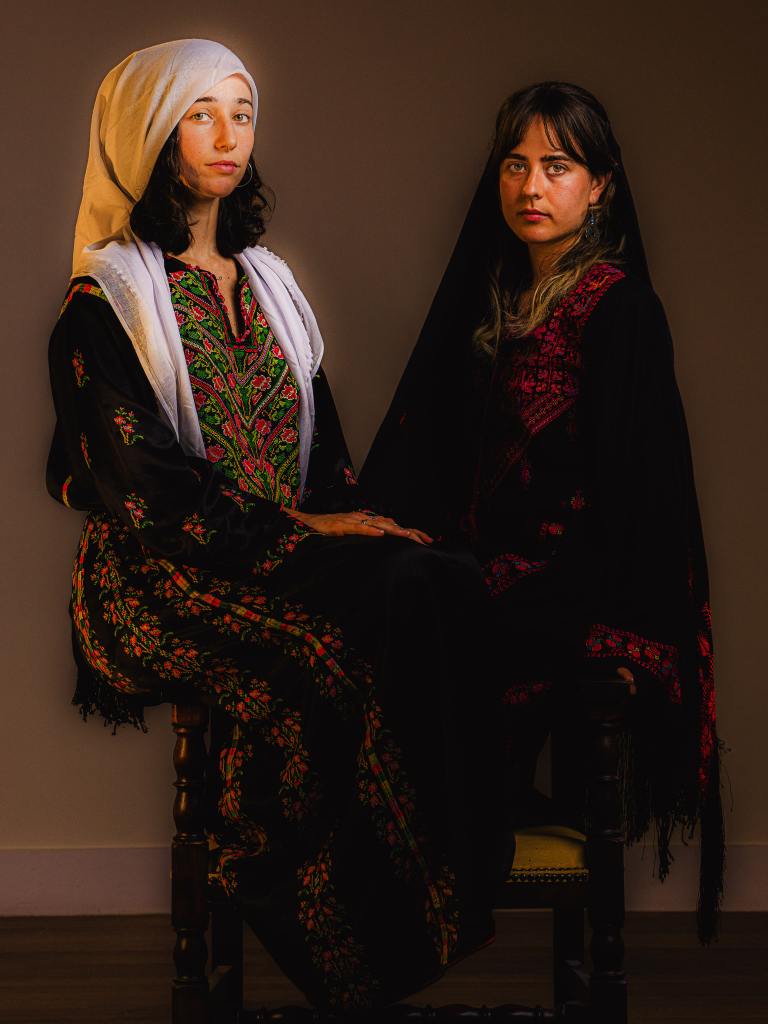
- Name: Khadeja
- Role in Solidarity Movement: Community organiser for solidarity movement in Utrecht, the Netherlands.
- Connection to Palestine: Solidarity.
Visual Composition:
- Pose & Expression: A classic off-camera portrait style from Palestine during the 19th century.
- Lighting & Style: soft key light and warm shadows. The backlight is warm temp. Separating her from the background and from the key light.
Symbolism:
- Elements: The Headband follows the style of Gaza like the dress. Several pomegranates on the dress that is used in the embourdry. Figs are also presented.
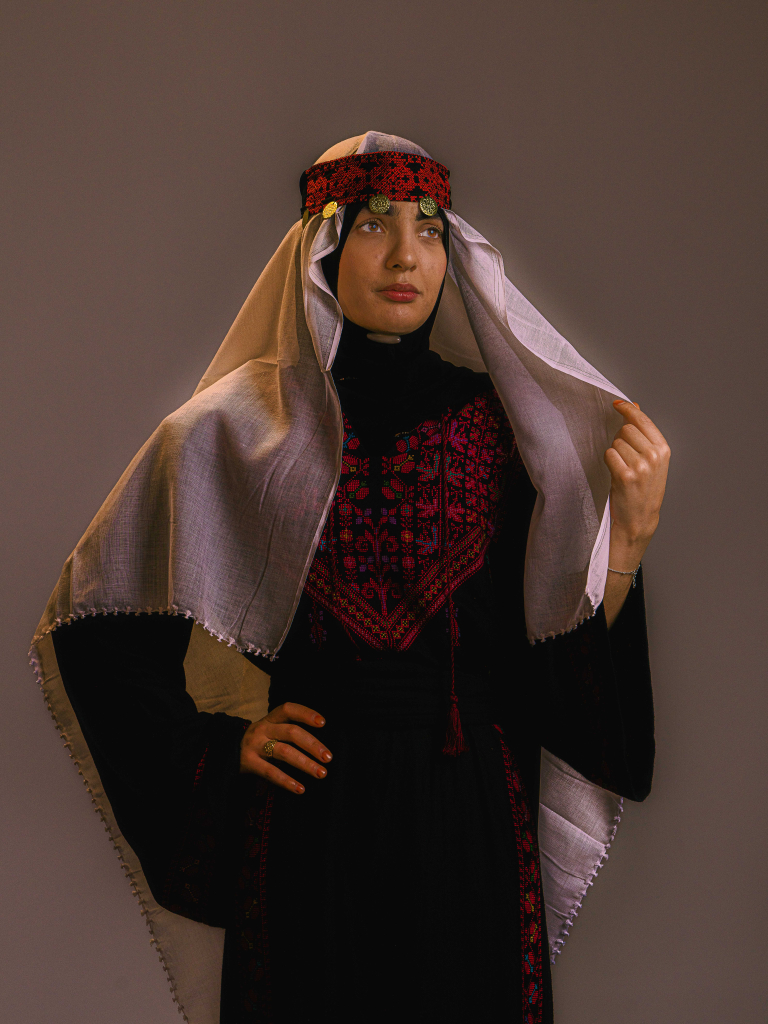
- Name: Manus
- Role in Solidarity Movement: Community organiser and leader of EU for Peace.
- Connection to Palestine: Studied Arabic in Palestine and lived in Bethlehem.
Visual Composition:
- Pose & Expression: Manus domniate the scene in a classic man portrait in Palestine.
- Lighting & Style: soft side light that separate both face sides.
Symbolism:
- Elements: Central Palestine farmer dress, with a black belt. The head cover is another classic piece of central Palestine with one middle knot.
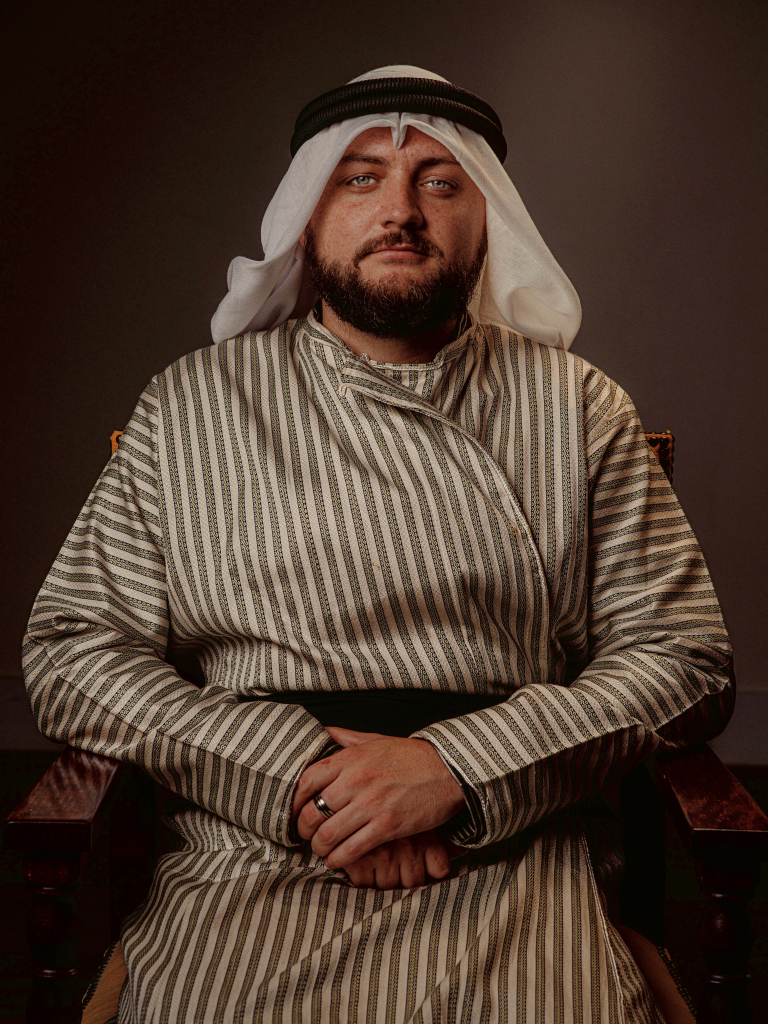
Name: Rawan
Role in Solidarity Movement: A Palestinian.
Connection to Palestine: Born and raised up in Nazareth.
Visual Composition:
- Pose & Expression: A classical pose of women in the 20th Century in Galilee.
- Lighting & Style: 4 points of light. The soft key light from her right. A hair light to separate her and the background and gave her a little warm hallo on the top. Two more lights aim to reduce the contrast.
Symbolism:
Elements: The headband is a classical tie from the North of Palestine. The dress is a festive dress comes from Gaza. This dress was made in UNRWA workshops in 2022.
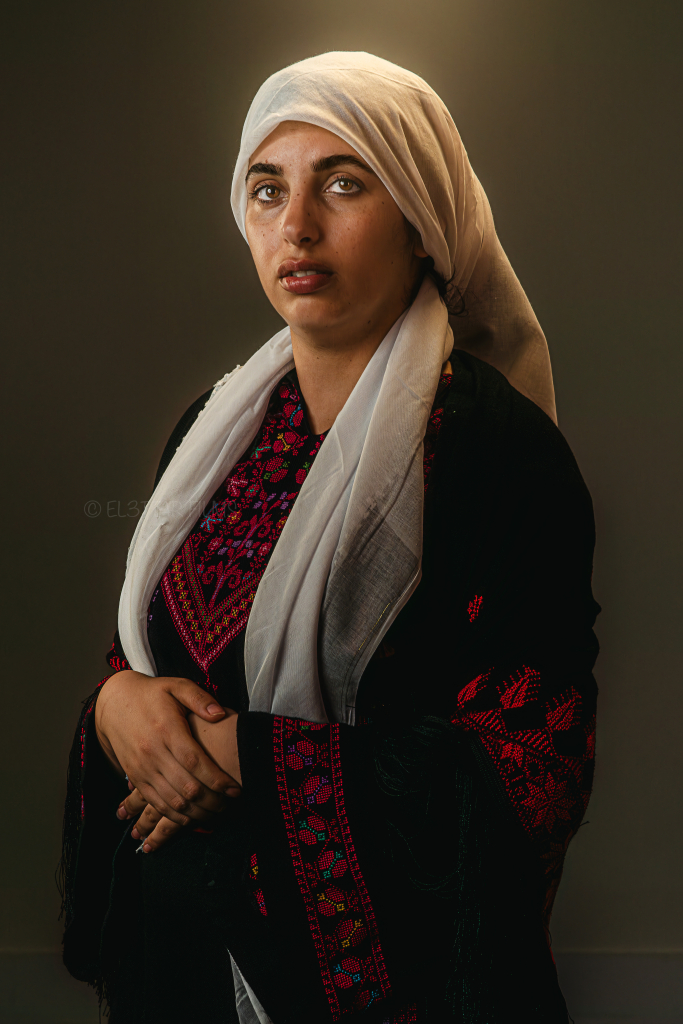
Anas
- Name: Anas
- Role in Solidarity Movement: Filmmaking and post-producing films for Palestine.
- Connection to Palestine: Origins from Hebron Bedouin Tribes.
Visual Composition:
- Pose & Expression: Anas poses in a typical hysterical face-on that is well-known among his ancestors portraits.
- Lighting & Style: soft side light that separate both face sides.
Symbolism:
- Elements: a typical head-dress of Hebron bedouins, typical shirt and Abaya that reflects the area traditions.
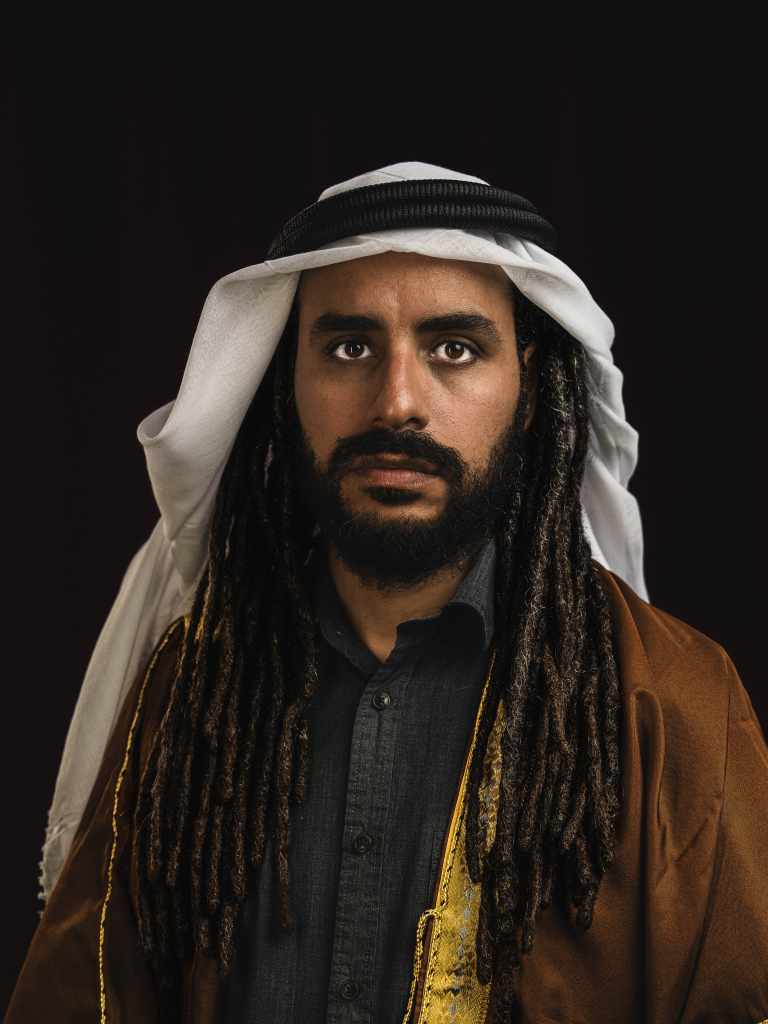
Year
2024
Director
Gamaal El Attar
